The Supermicro X11SPM-TPF is a platform we have wanted to review since it originally came out. This is a mATX Intel Xeon Scalable motherboard which means it has relatively diminutive dimensions. Additionally, it utilizes the onboard Intel LAN function to provide dual SFP+ networking along with expansion capabilities in that compact package. In our review, we are going to show you the platform and its capabilities, and talk about where we see it being used.
Supermicro X11SPM-TPF Overview
The Supermicro X11SPM-TPF is a mATX motherboard which means it measures 9.6″ x 9.6″. This is far from the most exotic motherboard out there, but it also has one major benefit: it is compact. The 9.6″ is about 20% shorter than a full ATX motherboard which means systems designers can make smaller systems or fit more alongside the motherboard in 19″ rackmount deployments such as additional SSDs.
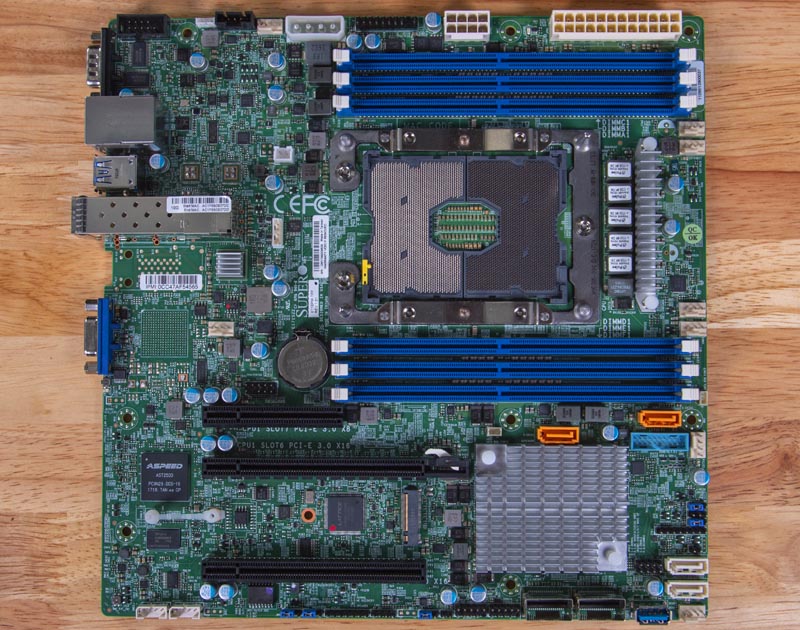
The main feature is the Intel LGA3647 socket which accepts first or second-generation Intel Xeon Scalable CPUs. There is a limitation, the CPU socket only is rated for up to 165W TDP CPUs. Also, given the small size of the platform, one gets six DDR4 slots. That means one can fill all six memory channels with up to DDR-2933 modules and up to 1.5TB of memory. Full Xeon Scalable platforms can handle two DIMMs per channel for up to 12 DIMMs per socket. Still, six or fewer DIMMs is extremely popular in this segment so we see this as covering most use cases in the segment.
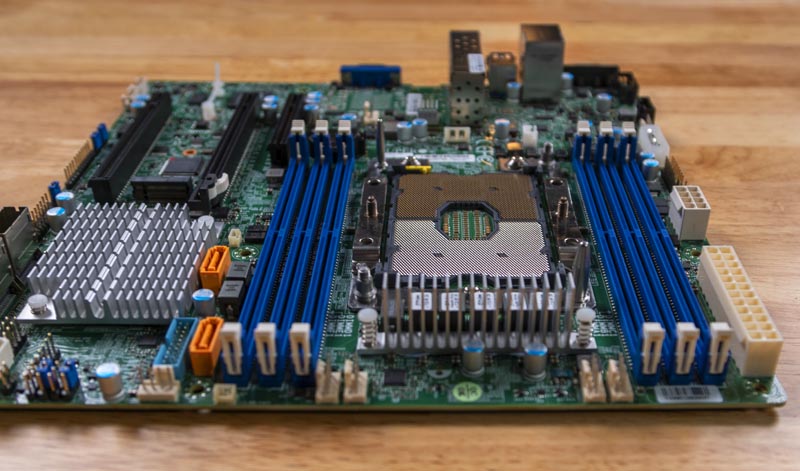
PCIe Gen3 expansion includes two x16 slots and a x8 slot. The x8 slot is open-ended which means that one could put a x16 physical card that runs at x8 electrical in the slot, even though the clearance is tight. One of the PCIe x16 slots has a GPU retention latch to keep GPUs in the slot during shipping. That same x16 slot is a double-width slot. At the end of the board, we find another x16 slot. Unlike with lower-end Xeon E-2200 motherboards, with the Supermicro X11SPM-TPF, all three of these slots have a full set of dedicated PCIe lanes directly to the CPU without using PCIe switches.
Together these three slots account for 40 of the 48 possible CPU PCIe Gen3 lanes. The other 8 lanes are not being wasted. Instead, they are being used to augment the bandwidth to the Intel C622 PCH to give additional I/O bandwidth to the rest of the platform.
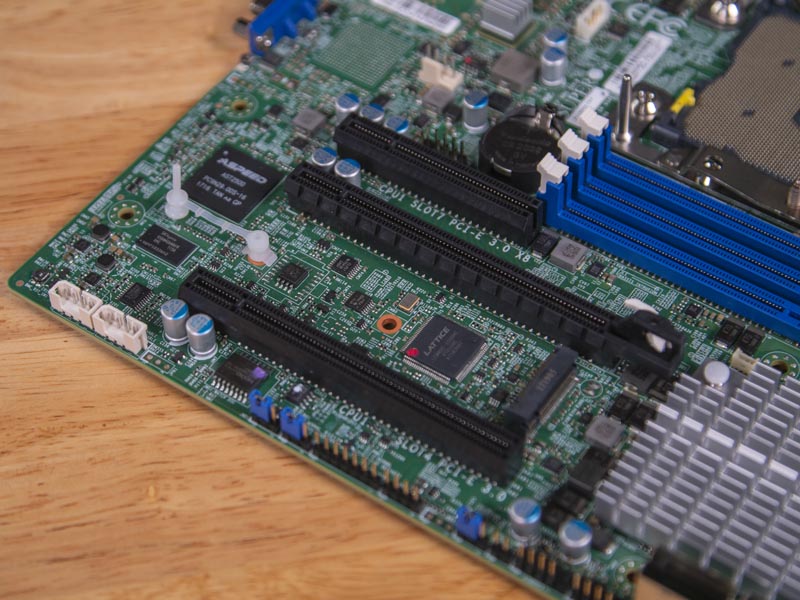
Between the two PCIe x16 slots is a M.2 slot that can take M.2 2242 (42mm) or 2280 (80mm) SSDs. The M.2 slot is PCIe Gen3 x4 which means it has full bandwidth available. The M.2 slot utilizes the Intel C622 PCH for connectivity which is one reason why those additional eight PCIe lanes from the CPU to the PCH are important.
Storage goes far beyond a single M.2 slot. The platform has a total of 12x SATA III 6.0gbps ports. There are two gold 7-pin SATA connectors that can provide compatible SATADOMs with power. Two additional 7-pin SATA connectors are in the corner of the board. One can see two SFF-8087 ports onboard. These are commonly used for SAS connectivity but here they are each dedicated to providing four SATA III lanes in a high-density form factor. One can use SFF-8087 to SFF-8087 cables directly to chassis storage backplanes or use breakout cables to get individual 7-pin SATA connection points.
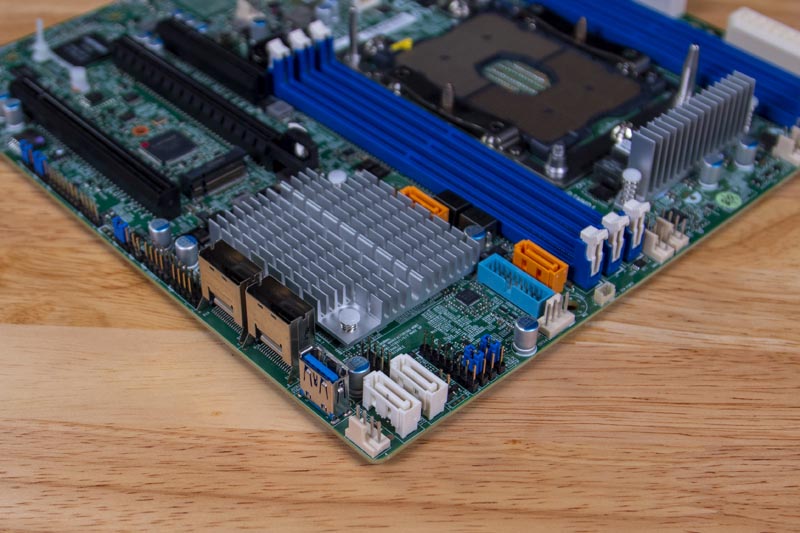
Additionally, there is a USB 3.0 type-A header. Next to the PCH, one can also see the USB 3.0 front panel header for cases that support it.
Rear I/O includes a fairly standard Supermicro I/O block. There are legacy VGA and serial ports. One can see four USB ports. Two are USB 2.0 and two are USB 3.0. Above the USB 2.0 ports, there is an out of band management NIC port.
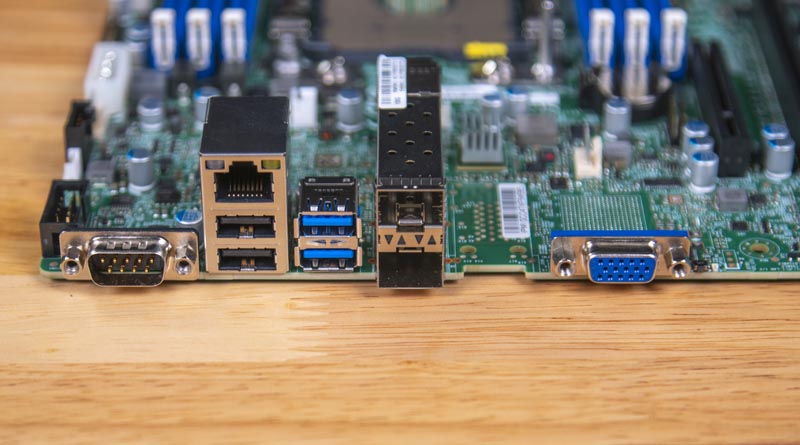
The big difference here is the dual SFP+ 10GbE ports. One can see the cages next to the USB 3.0 Type-A rear ports. Supermicro is doing something different than we see on many of their designs. The company is using the Intel X722 NIC on the upgraded Intel C622 PCH to deliver the 10GbE MAC. There is a small Inphi CS4227 PHY, but the OS will see the Intel X722 NIC:
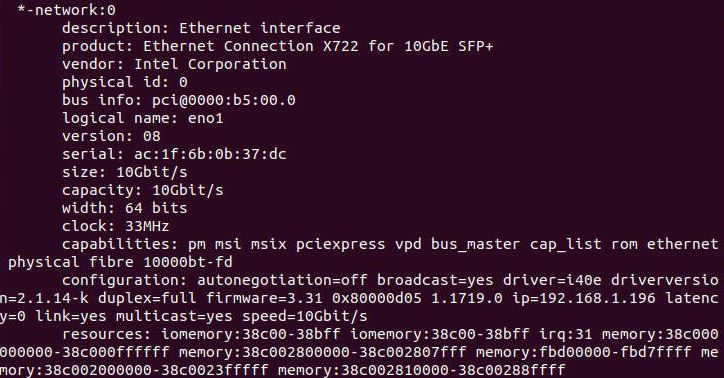
We wanted to take a moment and address the Supermicro X11SPM-TF which is very similar but instead of having the Inphi CS4227 and SFP+ cages, it has and Intel X557 chip where the pads are shown in the picture below along with two RJ45 ports. Supermicro X11SPM-F version of this motherboard downgrades to the lower cost C621 PCH and has only 1GbE connectivity. That means that one can select the X11SPM family and pick SKUs for specific networking options to build servers or appliances.
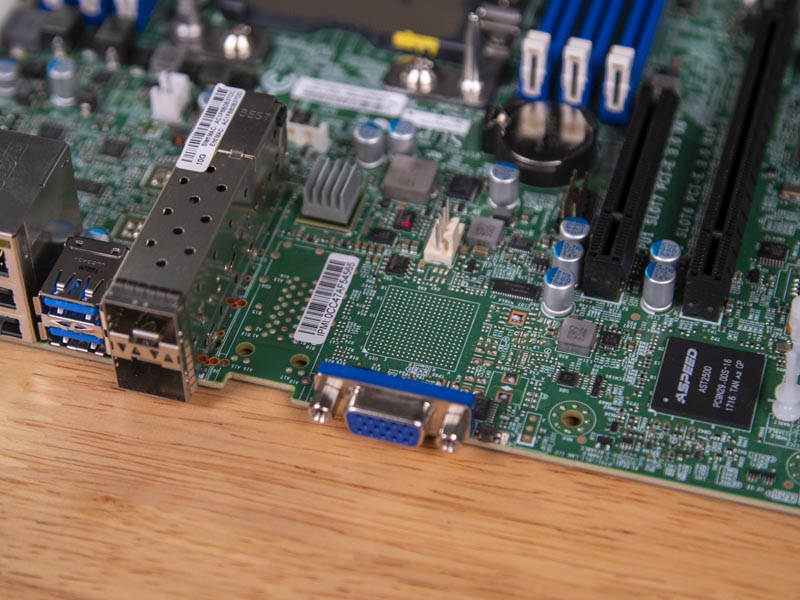
Overall, the Supermicro X11SPM-TPF is a great low-cost and compact motherboard that exposes many of the Intel Xeon Scalable platform’s unique features.
Next, we are going to look at management features before moving onto performance, topology, and then our final words.

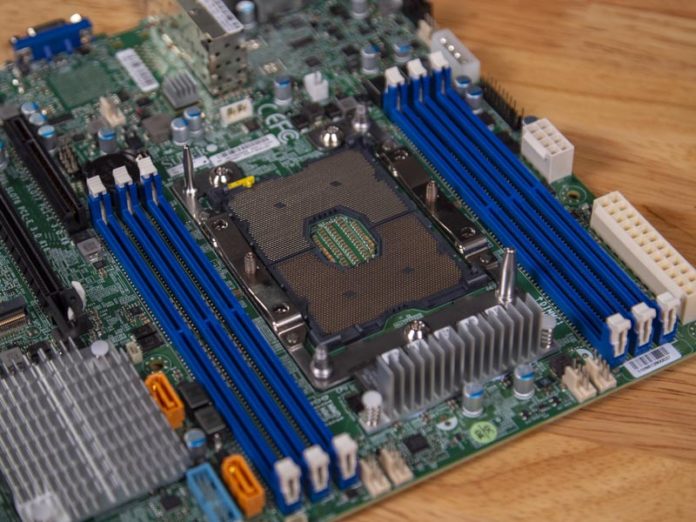
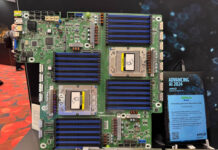
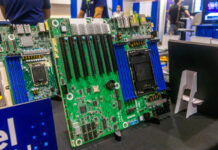

I wonder what percentage of STH reviews get a 9.3 rating. I bet it’s high.
– Ryan
I think STH reviews are pre-informed choices that Patrick knows fit a niche in the first place. Hence, the 9+ reviews ar emany.
In this case if you need a mATX intel cpu mainboard…Tyan? Gigabyte? Asus? Asrack? I think we’d only consider Supermicro or maybe Gigabyte in a server deployments built in house. If an Asus or Asrack were reviewed it might be more interesting but I don’t know it would change my mind.
It’s my impression these reviews are done because STH is running a lab for their own internal deployments and just publishing the results as a sort of side-project-blog. It probably makes them some money for ads and gets them noticed for what they can do, but I don’t think the reviews themselves are the primary “product” of the STH site.
Just some thoughts.
First, Matt I think you are right. If you think about it, there are three primary filters. Servers are so competitive and relatively standardized that a 5/10 or 7/10 product will never come to market. Our team does curate a bit in terms of what we want to review. We do not waste time on silly products. Vendors do not want us to review products that are poorly designed. On the consumer side, there is more market diversity. On the server-side, anything below an 8/10 cannot be sold. Most companies would not want to have the bottom half of their portfolio reviewed as well.
On the lab for internal deployments bit. It actually takes a ton of time/ money/ effort to get these reviews done. For example, with this motherboard, we need multiple CPUs, 6x 32GB DDR4-2933 sticks, SSDs, a chassis, PDU, power meters, network switches and gear, and more. We have a fairly good system for getting reviews done, but it is far from a side project. For some context, we are the largest site that is dedicated to independent data center hardware reviews at this point. By page views, it is not even close. I actually see reviews as central to what we do. Good topic for my Q4 Letter from the Editor.
Ryan – we provide a ton of free data/ views to our readers that is basically unavailable otherwise. If you want more detail, it is there. We are not doing the write 500 words, use all stock photos, and give products an award model. I think the natural selection process probably biases the ratings higher as you gather. Given the three logical filters to us doing a review, it is what you would expect, right?
I have it in config with 4108, 196mb ram , 2 lsi host bus adapters and 16 hdds + m2 ssd for the os. Software raid array .With teamed Ethernets , it saturates 10gbe. File’s filler.
My build, works already 11 months without headache .
on 2nd page:
“Storage HDDs: 4x 10TB Western Digital Red”
is it enough storage? ;P
Patrick, I did not mean my comment to be insulting. I really appreciate what you’ve built here. I am a data scientist, heading up the engineering team at a new R&D center for a multinational consultancy and STH is the only computer hardware site aimed at people like me (I am not a gamer). I look at STH every day. The thing is, when you spend all day thinking about data, metrics, scores, etc, you can’t really turn that off. I noticed what seemed to be a gaussian distribution of scores around 9.3 with low variance at STH and thought I would mention it here because, to me, understanding what scores mean involves looking at how they are distributed. I also thought it was kind of funny. To be honest the scores are not the important part of your work for me, it’s all the technical detail and context about the marketplace. STH is wonderful, thank you for it.
Hi, did you measure the power consumption in watts with a 12 Volt dc adapter under vmware esx 6.7, thanks, stefan?
Hi, I am on the evaluation for my new Home Server, and this practically motherboard will my prefered one. Now, I saw on the supermicro website, that the version -TF and -TPF has the chipset C622 instead of the C621 from the lower spec -F version. That is realated to the compatibility from the OS side. So why I can not put Windows 10 pro on the two 10G LAN versions?
@patrick Thankyou for the great work that STH is doing. I don’t buy any hardware without searching STH first.
I also regularly check in on STH for tech trends & updates.
I almost purchased this Supermicro motherboard MBD-X11SPM-TF (& later the X11SPH-nCTF) the until I saw the ASROCK EPC621D6U-2T.
Asrock seems to have understood the need to reduce the sata cabling from the motherboard to the HDD backplane without the need for hardware RAID.
Will you be reviewing the ASROCK EPC621D6U-2T anytime soon?
Hi Tony. ASRR is a small outfit so getting things done such as reviews is very difficult as there are often no test units available.